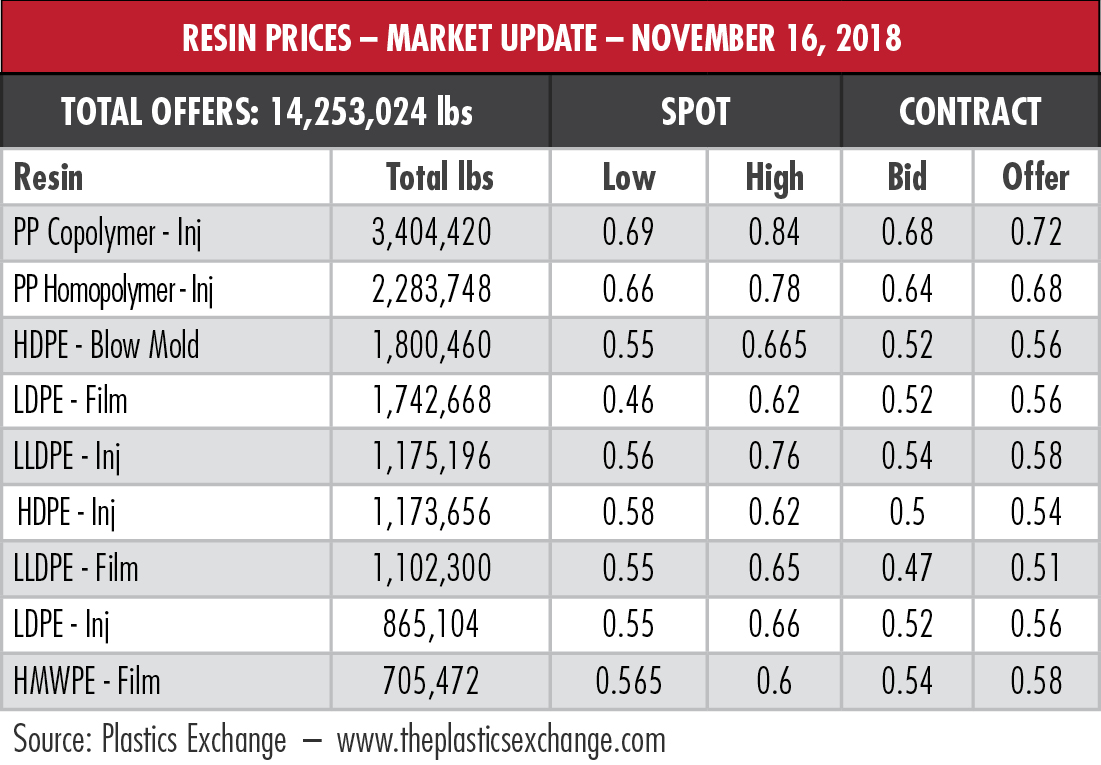
The Frac Spread feature will not appear next week during the Thanksgiving Day holiday but will return on Nov. 29.
The update came at lunch between bites of brisket at this week’s DUG Midcontinent Conference in Oklahoma City: the price of natural gas, which startled the industry when it closed above $4 per million British thermal units (MMBtu) on Nov. 13, was up 17% at midday Nov. 14. By the end of trading, the jump was 18% in one day.
Couple that with NGL prices, most of which suffered double-digit declines last week, and the result is a slew of tightly squeezed margins.
 The simple answer is that natural gas storage is very low and winter is approaching. But low storage numbers have been out there for months and winter has been on the calendar since Julius Caesar put it there in 45 B.C. EnVantage Inc. suspects that traders who sold short are reconsidering their positions.
The simple answer is that natural gas storage is very low and winter is approaching. But low storage numbers have been out there for months and winter has been on the calendar since Julius Caesar put it there in 45 B.C. EnVantage Inc. suspects that traders who sold short are reconsidering their positions.
“Now we are in November with storage starting out the winter at the lowest levels since 2005 and cold snaps beginning to come through the lower 48,” EnVantage said in a report. “The combined U.S. and Canadian storage levels are down nearly 700 [billion cubic feet (Bcf)] when compared to the five-year average. To put things into perspective, the five-year average drawdowns of the two countries are slightly in excess of 2.5 [trillion cubic feet (Tcf)].”
Countering those worrisome numbers is the U.S. Energy Information Administration’s (EIA) projection that the upcoming winter will only require a 1.77 Tcf draw in U.S. inventories, which would be the second-lowest in the past decade. EnVantage, however, is not convinced.
 “As an industry, we need to take these projections with a large grain of salt as the unexplained variances in the EIA projections [balancing item] are the largest that we have ever seen,” the analysts said. “That implies that the EIA projections contain a greater amount of uncertainty than ‘normal,’ all else being equal.”
“As an industry, we need to take these projections with a large grain of salt as the unexplained variances in the EIA projections [balancing item] are the largest that we have ever seen,” the analysts said. “That implies that the EIA projections contain a greater amount of uncertainty than ‘normal,’ all else being equal.”
The Mont Belvieu, Texas, price of ethane dipped below 30 cents per gallon (gal) last week for the first time since early June with no bottom in sight as crude prices continue to fall.
EnVantage estimates that ethane cracking demand will not surpass 1.5 million barrels per day (bbl/d) and expects Gulf Coast ethane exports to stay around 140,000 bbl/d. Ethane rejection west of the Marcellus/Utica could exceed 400,000 bbl/d.
“This sets up a collision course with the ethylene industry in the first half of 2019 as 200,000 to 300,000 bbl/d of new ethane cracking capacity comes online,” the analysts wrote. “Ethane stored in salt domes on the Gulf Coast should drop well below 30 million barrels, causing a very tight situation that could spike ethane prices back up to the 50 cents to 60 cents/gal level during the first half of next year.”
 For now, though, Mont Belvieu ethane is 41% below its peak in mid-September and its margin was reduced by 40% in the last week to just over 5 cents/gal.
For now, though, Mont Belvieu ethane is 41% below its peak in mid-September and its margin was reduced by 40% in the last week to just over 5 cents/gal.
Propane fell by almost 11% last week at Mont Belvieu as its margin shrunk by almost 24% to about 39 cents/gal. EnVantage noted that the wide spread between Mont Belvieu and Conway, Kan., propane (in September, it was $1.06/gal vs. 78 cents/gal) induced propane to be shipped to the Gulf Coast by rail. Midstream companies in the Rockies and Midcontinent began to reject ethane to free up pipeline capacity to move propane. Propane exports were strong but not strong enough to absorb the flow, so inventories began to quickly build.
In the week ended Nov. 9, storage of natural gas in the Lower 48 experienced an increase of 39 Bcf, the EIA reported. The figure resulted in a total of 3.247 Tcf. That is 14% below the 3.775 Tcf figure at the same time in 2017 and 15.6% below the five-year average of 3.848 Tcf.
Joseph Markman can be reached at jmarkman@hartenergy.com or @JHMarkman.
Recommended Reading
Phillips 66’s NGL Focus, Midstream Acquisitions Pay Off in 2024
2025-02-04 - Phillips 66 reported record volumes for 2024 as it advances a wellhead-to-market strategy within its midstream business.
Rising Phoenix Capital Launches $20MM Mineral Fund
2025-02-05 - Rising Phoenix Capital said the La Plata Peak Income Fund focuses on acquiring producing royalty interests that provide consistent cash flow without drilling risk.
Equinor Commences First Tranche of $5B Share Buyback
2025-02-07 - Equinor began the first tranche of a share repurchase of up to $5 billion.
Q&A: Petrie Partners Co-Founder Offers the Private Equity Perspective
2025-02-19 - Applying veteran wisdom to the oil and gas finance landscape, trends for 2025 begin to emerge.
Chevron Makes Leadership, Organizational Changes in Bid to Simplify
2025-02-24 - Chevron Corp. is consolidating its oil, products and gas organization into two segments: upstream and downstream, midstream and chemicals.
Comments
Add new comment
This conversation is moderated according to Hart Energy community rules. Please read the rules before joining the discussion. If you’re experiencing any technical problems, please contact our customer care team.






